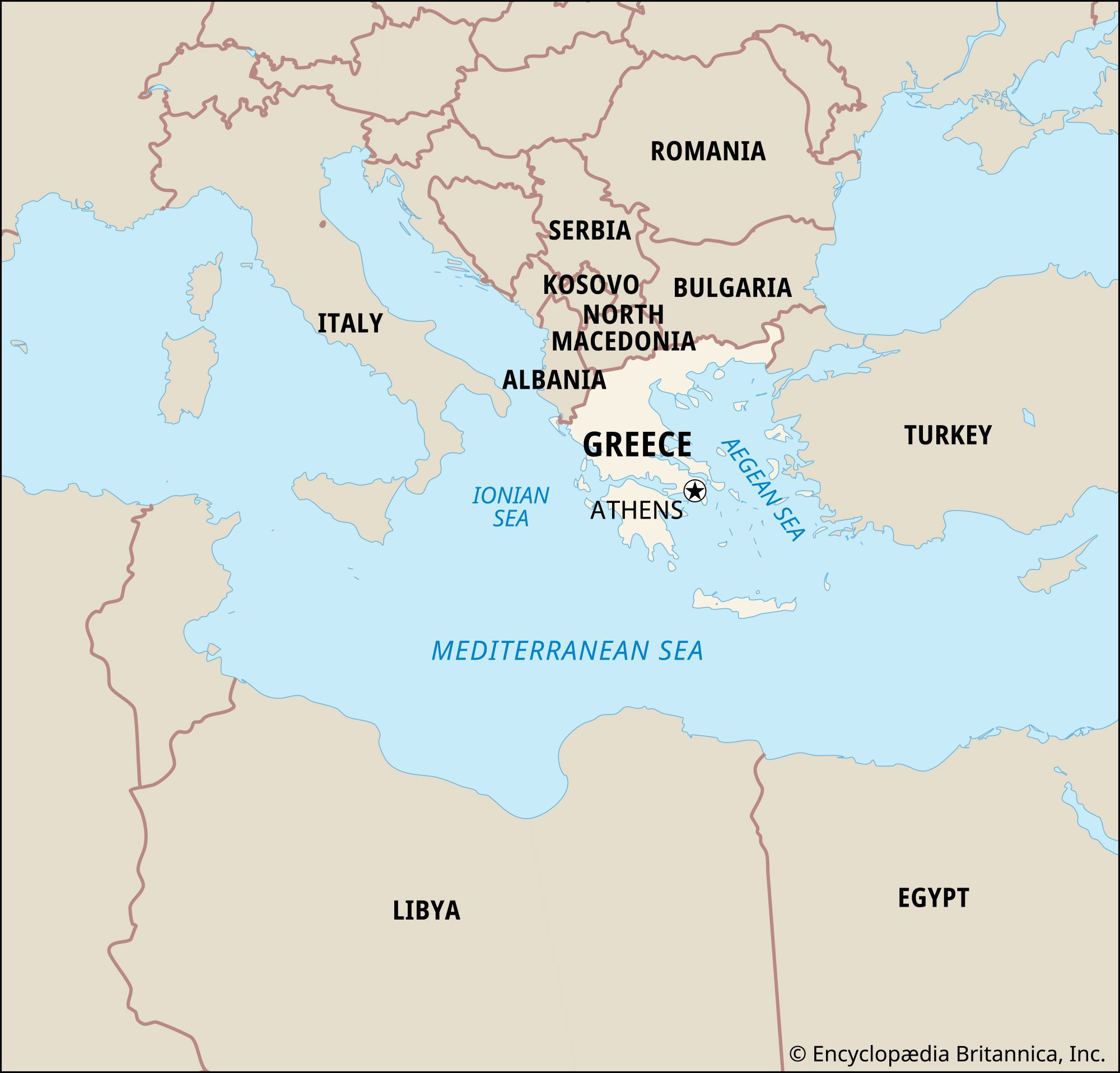Greece, a land celebrated for its ancient history, stunning islands, and vibrant culture, is a popular destination for travelers and history enthusiasts alike. But Where Is Greece Located exactly? This captivating country sits at the southernmost tip of the Balkan Peninsula, a region in Southeast Europe, offering a unique blend of European, Mediterranean, and Near Eastern influences due to its strategic geographical position.
Greece’s Location in the Balkan Peninsula and Southern Europe
Geographically, Greece is positioned in Southern Europe. It forms the southernmost part of the Balkan Peninsula, a region known for its diverse landscapes and rich history. Its mainland juts out into the Mediterranean Sea, creating a dramatic coastline characterized by peninsulas and islands. Understanding where Greece is located on the Balkan Peninsula is key to grasping its historical and cultural connections to the surrounding region.
Image alt text: The Academy of Athens, a neoclassical building representing Greek intellectual and cultural heritage, located in Athens, the capital of Greece.
Bordering Countries and Seas Around Greece
To pinpoint where Greece is located, it’s helpful to consider its neighbors and the seas that embrace it. Greece shares land borders to the north with four countries: Albania to the northwest, North Macedonia and Bulgaria to the northeast, and Turkey to the east. These land borders, stretching approximately 735 miles (1,180 km), delineate the northern reaches of Greece.
Greece’s maritime borders are equally significant in defining where Greece is located. The country is washed by three major seas:
- Aegean Sea: To the east of mainland Greece, separating it from Turkey. Many Greek islands are scattered within the Aegean Sea, some lying very close to the Turkish coast.
- Mediterranean Sea: To the south of Greece, this vast sea has been central to Greek history and trade for millennia.
- Ionian Sea: To the west of Greece, separating it from Italy. The Ionian Islands are a prominent feature along Greece’s western coastline.
Image alt text: A detailed locator map of Greece highlighting its boundaries, major cities, and geographical position in Europe.
Key Geographical Features of Greece: Mountains and Islands
The physical geography profoundly influences where Greece is located and what the country is like. Two dominant features characterize the Greek landscape: mountains and the sea.
- Mountains: Approximately four-fifths of Greece is mountainous, with the Pindus Mountains forming the spine of the mainland. These mountains historically limited inland communication but contributed to the development of distinct regional identities.
- Islands: Greece boasts over 2,000 islands, with around 170 inhabited. These islands, making up about one-fifth of Greece’s total land area, are spread across the Aegean and Ionian Seas and are vital to Greek culture and tourism.
The capital city, Athens, is located in the Attica region, in the southern part of mainland Greece. Attica is a peninsula projecting into the Aegean Sea and now houses about a third of Greece’s population, highlighting the region’s importance within where Greece is located.
Image alt text: World data locator map showing the geographical location of Greece in relation to Europe, Africa, and Asia.
Greece: A Crossroads of Continents
Where Greece is located places it at a unique crossroads – the meeting point of Europe, Asia, and Africa. This strategic position has shaped Greece’s history, making it a melting pot of cultures and a significant player in global events throughout the centuries. Being at the juncture of these continents has allowed Greece to inherit legacies from Classical Greece, the Byzantine Empire, and the Ottoman Turkish rule, creating a rich tapestry of influences that are still visible today.
Conclusion: Greece’s Strategic and Beautiful Location
In conclusion, Greece is located in Southern Europe, at the southern end of the Balkan Peninsula. Bordered by Albania, North Macedonia, Bulgaria, and Turkey, and surrounded by the Aegean, Mediterranean, and Ionian Seas, Greece occupies a geographically significant and beautiful part of the world. Its mountainous terrain and numerous islands, combined with its position at the crossroads of continents, have shaped its unique identity and enduring appeal. Understanding where Greece is located is the first step to appreciating its rich history, culture, and stunning landscapes.


 Greece1 of 2
Greece1 of 2